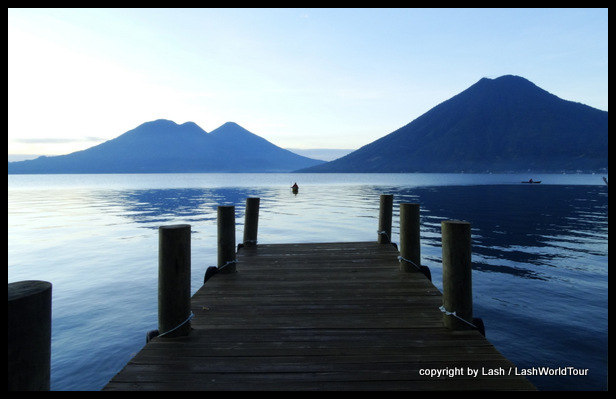
Volcanoes at Lake Atitlan
13 Surprising Facts About Guatemala
In this post I reveal over a dozen interesting & unusual things I learned about Guatemala by traveling around the country for two full months in Nov-Dec, 2015. A few of these facts anyone could learn easily by researching Guatemala, but most of them you’d only discover by visiting the country.
I hope you’ll find them as intriguing as I do. Here we go:
1. Over 30 Volcanoes Dot the Countryside.
Most of Guatemala is covered in hills and mountains. In the central and western region, in addition to the ever-rolling countryside, more than 30 majestic volcanoes tower over the landscape.
Some are active like Mt. Pacaya, which recently let loose a new molten lava eruption for three days in Dec, 2015, and Mt. Fuego, which puffs out great clouds of thick dark smoke on a daily basis.
Several other volcanoes, like Mt. San Pedro at Lake Atitlan and Mt. Akatenago near Antigua, are regularly climbed by adventurous visitors.
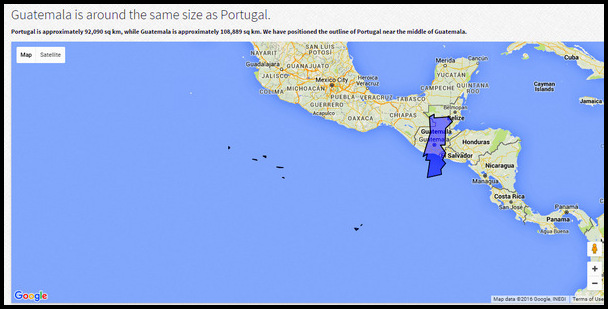
Guatemala vs Portugal
2. Tiny Guatemala is roughly the size of Tennessee or Portugal.
The entire country can fit within the borders of just one medium-size US state – Tennessee. From an American perspective, that’s tiny indeed!
Perhaps it’s not so small for citizens of Europe, where many countries are about the same size as Guatemala, some a bit smaller, others maybe twice as large. Whatever your perspective, though, Guatemala is a pretty small country.
The good thing about that for travelers is that distances between points of interest are generally not far. In just 1-3 hours overland travelers can reach most of the country’s most famous & worthwhile places.
The longest overland trips, say between Tikal or Flores in the far north and central destinations like Guatemala City, Antigua and Lake Atitlan, are 6-10 hours. But it’s easy to break up those trips with other great destinations in between.
3. Late-night Basketball is All the Rage
During my first night at Panajachel town on the shores of Lake Atitlan, I was thoroughly surprised to hear a basketball game in full swing at 10 pm near my guest house.
I thought it was just a fluke of Pana, or perhaps that particular day of the week. But when I reached the next town, I quickly stumbled upon another large public basketball court, smack in the middle of town. Every night until at least 10 pm, local guys were playing ball.
It seems to be a country-wide activity, for whatever reason that is, because I came across public basketball courts in most towns I visited. Beats me!
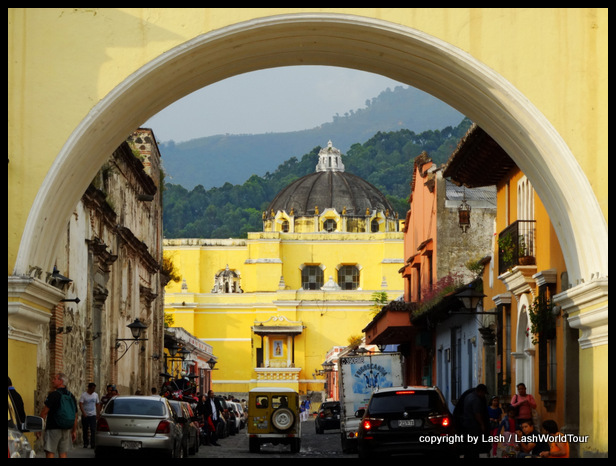
El Merced Cathedral viewed from Antigua’s distinctive arch
4. UNESCO World Heritage City, Antigua, was built by the Spanish in the 1500s-1700s.
When the Spanish set up their third attempted capital city in Guatemala back in the mid 1500s, they went about constructing a grand capital city full of Catholic churches & monasteries, schools & universities, hospitals, cobblestone streets and grand baroque houses. Over the next two centuries, as Antiqua became the epicenter of Central America, they continued building in various styles of architecture that developed in Europe at the time.
Earthquakes in 1773 greatly damaged Antiqua and inspired the relocation of the capital to what is now Guatemala city. Luckily, most of Antiqua’s gorgeous architecture, though damaged and ransacked, remained fairly intact, where it still charms visitors to this day, 600 years later.
As if the city itself weren’t striking enough, Antiqua is surrounded by three large domineering volcanoes that are clearly visible from town. Vulcan Aqua can be seen from just about everywhere, making it the town’s most prominent landmark.
Vulcan Fuego and Akatenango can generally only be seen from plentiful rooftops, where residents and visitors can watch Fuego spewing thick gray smoke every morning.
Antiqua is a one-of-a-kind town in Guatemala. Only there will you find an entire city full of Spanish architecture lining centuries-old cobblestone streets. In my opinion it’s one of the best places to visit in Guatemala.
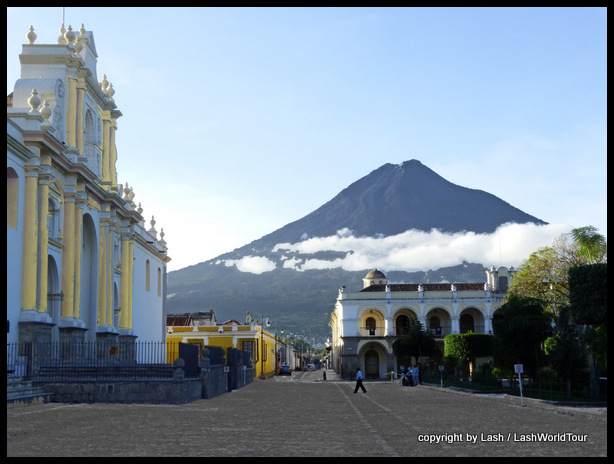
Antigua Central Plaza with Volcan Agua
5. Kids are Obsessed with Loud Firecrackers
I was equally surprised during my 1st week in the country to hear firecrackers going off every single evening. Was it a special festival? A holiday week?
As I continued exploring Guatemala over the next two months, I continued hearing loud banging firecrackers going off every day, at any random time from early morning through afternoon, evening and into the middle of the night.
I finally asked some locals what was going on. Apparently, Guatemalan kids are just obsessed with setting off firecrackers.
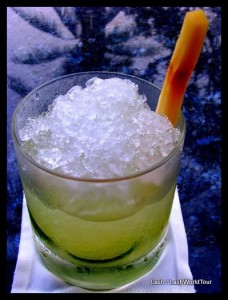 6. Cocktails are Really Cheap
6. Cocktails are Really Cheap
Everywhere I’ve ever traveled in the world, I’ve found cocktails to be expensive. In fact, they’re always the most expensive drinks available, usually costing 2-5 times the price of a beer or glass of wine. I finally just accepted that my preferred drinks are expensive.
So when I arrived in Gautemala, I didn’t have drinking on my mind. I never bothered to look at prices in bars or restaurants. But several guest houses and resorts I stayed at had bars, so eventually I noticed the prices and discovered that hard liquor, mixers and cocktails are unbelievably cheap. Rum and Tequila especially so, even top shelf rum like Bacardi.
I guess it makes sense that rum and tequila are cheap there, since Guatemala is so close to Mexico and Puerto Rico, where they originate. It was a great discovery for a rum cocktail fan like me.
Typical Happy Hour prices for shots and mixers are 10Q / $1.30 US. That’s it! Outside of Happy Hour, mixers generally cost a whopping 15Q / $2 US and full-fledged cocktails like Margaritas, Daquiris and Mojitos cost 25-35Q / $3.75-4.65 US, depending on the bar and the town.
Those same cocktails often offered 2 for 1 at Happy Hour. I’ve seen 2 Margaritas or 2 Caiparinias for 20Q / $2.65 US, and those in tourist bars at fairly expensive Flores town.
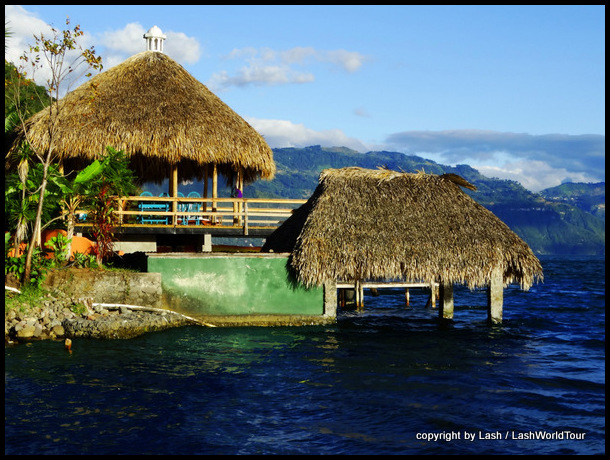
Lake Atitlan shore – eating buildings
7. Lake Atitlan’s shoreline is rising by 6 Meters in 10 Years, Devouring homes, properties and boat docks.
A little-known curiosity of famous Lake Atitlan is that it has no water outlet. As a result, each year the lake’s waters rise a bit higher as heavy rains fall during rainy season.
Several long-term western expats living there explained that in the last 10 years the lake waters have risen a whopping 6 meters / 20 ft.
When visiting Atitlan, anyone who takes a few moments to investigate the shoreline at any town will quickly notice submerged boat piers, stone walls, trees and vegetation, even parts of houses and hotels lying just offshore – the current shoreline, that is.
The devouring lake waters are most noticeable at San Pedro town, where entire floors of former hotels, restaurants and houses can be seen just below the surface. But anyone paying attention will start noticing that at most towns along the lake. This leads one to scrutinize other buildings situated just above the present shoreline, wondering how many more years they have before, they too, are engulfed by the great lake.
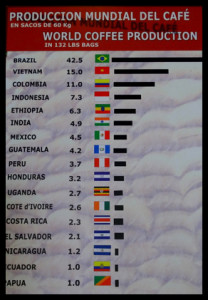 8. Guatemala is one of the world’s leading high-quality coffee producers.
8. Guatemala is one of the world’s leading high-quality coffee producers.
Guatemala’s coffee industry was created by the Spanish in the mid 1800s when they planted hundreds of acres of coffee trees around the country, specifically for export to Europe. Since then the coffee industry has continued growing. At present, coffee is Guatemala’s 3rd biggest export, represents 1/8th of the country’s GNP and is considered by coffee experts world-wide to have some of the finest high-quality coffee on the planet.
Travelers can easily visit several coffee plantations (fincas) in central, western and highlands regions, including those near Antiqua and Lake Atitlan. In-depth tours of the plantations include explanations of coffee growth, harvesting, production and roasting, followed by a stroll through coffee bushes. Tours usually finish off with a free cup of coffee grown right there.
If you’ve ever been curious about coffee, Guatemala is a fantastic place to learn all about it.
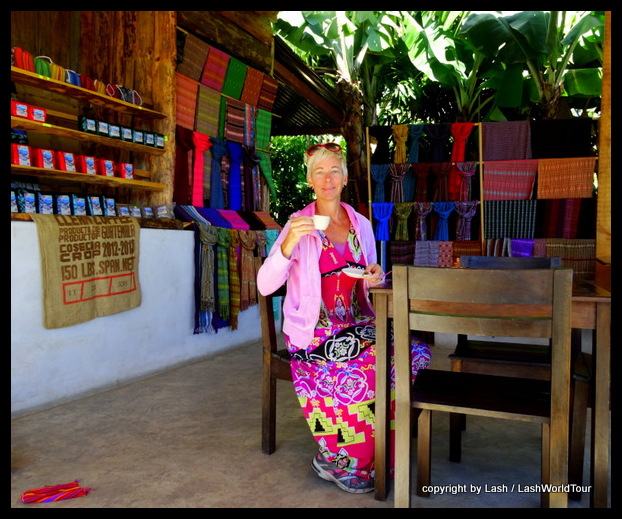
sipping espresso in San Juan (btw – didn’t like this coffee either!)
9. But good espresso coffees are hard to come by in Guatemala!
With Guatemala’s premium quality coffee industry, you’d think espresso would be prevalent throughout the country. Not so! Quite unfortunately for espresso lovers like me, Guatemalans drink their coffee like Americans – thin brown water.
Amazingly, the ‘espresso revolution’ is fairly new in Guatemala. The country’s few major towns and tourist centers are the only places espresso cafes can be found.
Even then, you might not get an enjoyable cup of espresso, despite their European prices. The problem is that Guatemalans tend to use medium roast beans (rubio) for their espressos, just like Australians and New Zealanders.
Dark roast espresso, like that served in Italy, America an elsewhere, is nearly impossible to find in Guatemala.
While traveling through the country I was perpetually exasperated at the irony of finding myself in one of the world’s leading gourmet coffee producing countries but unable to find a single cup of espresso that I could enjoy. E-gads!
Luckily, I did manage to find dark roast beans in two places, so at least I could buy that and make my own kick-ass dark roast coffee with my trusty French press.
So for anyone expecting to drink dark roast espresso coffee in Guatemala (or Belize for that matter) be forewarned that you’ll have to carry your own.
10. Black Tea is also hard to come by.
Quite strangely, practically no restaurant, comedor or cafe in Guatemala serves black tea! They do usually have tea, just not plain ole black tea. The normal standby in Guatemala is Chamomile tea. If they have anything else, it’s some kind of fruit tea, mint or cinnamon tea.
Initially I reasoned that imported black tea must be expensive while herbal & flower teas were produced locally. Then I saw the tea pack labels – Lipton’s Chamomile tea. Lipton’s?
Um, hello? If they can import Lipton’s Chamomile tea, why not Lipton’s black tea?
It’s a mystery to me. But I’m guessing that perhaps Guatemalans, being long-term coffee growers, just don’t like the taste of tea? Anyone have an insight here?
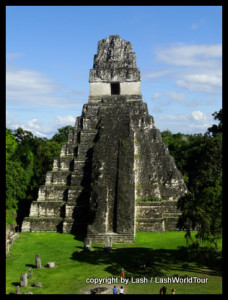
Templo I at Tikal –
11. The Ancient Mayan Civilization was centered here.
The amazingly sophisticated Mayan Civilization was primarily located in what is now Guatemala, the Yucatan Peninsula of Mexico and Belize. Guatemala is one of the primary locations where all the famous grand Mayan temple ruins can be visited.
In particular, Tikal in the far north is exceptionally magnificent with several large temples, plazas and other structures. Many other less visited but equally spectacular Mayan sites are scattered around northern Guatemala’s state of Peten.
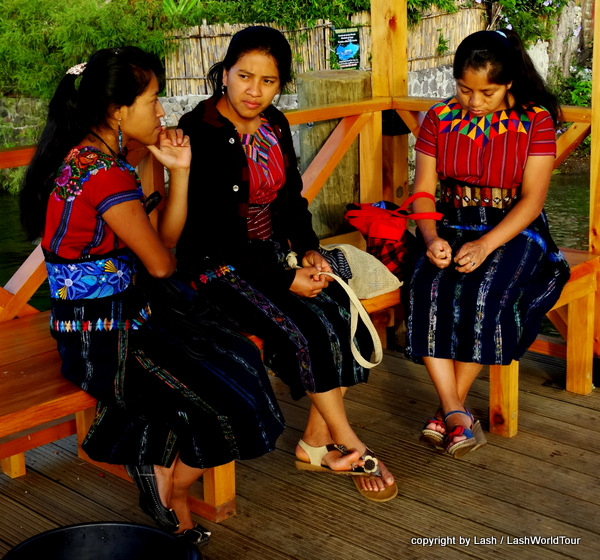
Mayan girls
12. Modern Mayan Culture is alive and well in Guatemala.
The ancient Mayan civilization disappeared mysteriously in about … The grand temples and citadels were left to fade into oblivion, swallowed up by dense jungle, until re-discovered in the 1880s.
However, the Mayan people continued living in the region, where their descendants still live a mainly traditional lifestyle today. This is particularly true in central and western Guatemala, where many Mayan towns & villages are located.
Throughout Guatemala Mayan women continue to wear colorful traditional clothing, weave stunning vibrant fabrics, cook traditional cuisine, speak Mayan and raise their families with traditional values and culture.
Nowadays many Mayans earn a living selling their gorgeous fabrics and other handicrafts & arts to tourists. Others farm in mountainous areas or work in small towns.
The Mayans provide a colorful, distinctive presence in Guatemala, adding a great splash of color and culture to the country.
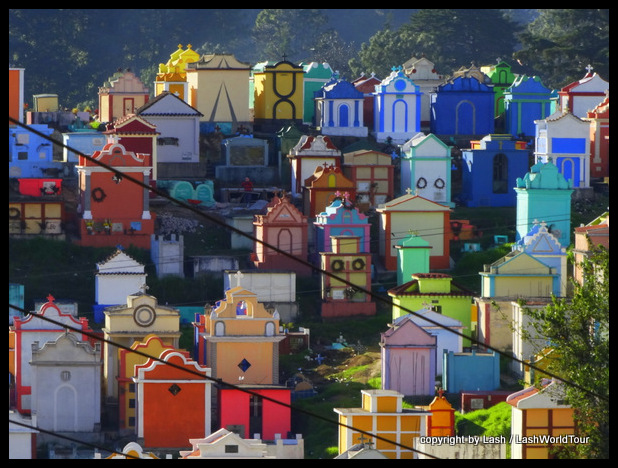
How’s THIS for a colorful cemetery?!
13. Guatemala has some amazingly colorful cemeteries.
I’d never heard of vibrantly colored tombstones and mausoleums until I traveled through Guatemala. But they sure are pretty!
The small mountain market town of Chichicastenango (Chi Chi for short) has perhaps the most famous of these colorful cemeteries. Many small group tours to Chi Chi market include a guided tour through the hilltop ceremony, which has some important & interesting local history.
Another famous colorful cemetery is located in Xela (Quezaltenango).
Other Guatemalan cemeteries have white tombstones and mausoleums but are continuously decorated with elaborate flower displays, making those cemeteries vibrant and cheerful as well.
————————————————————————————————–
You might also enjoy:
17 Reasons Guatemala is an Easy Travel Destination
12 Scenic Photos of Agua Volcano
My First Impressions of Guatemala
——————————————————————————————————










 Hi! I'm Lash, an American nomadic world traveler who's been traveling solo since 1998. I’m passionate about traveling the world nomadically and then sharing it all with you. I hope to inspire you to travel the world, to entertain you with tales from the road, and to help you reach your travel dreams. Welcome!
Hi! I'm Lash, an American nomadic world traveler who's been traveling solo since 1998. I’m passionate about traveling the world nomadically and then sharing it all with you. I hope to inspire you to travel the world, to entertain you with tales from the road, and to help you reach your travel dreams. Welcome! 




1 pings
Costs of Budget Travel in Guatemala
2016/02/23 at 3:13 am (UTC 8) Link to this comment
[…] 13 Surprising Facts About Guatemala […]